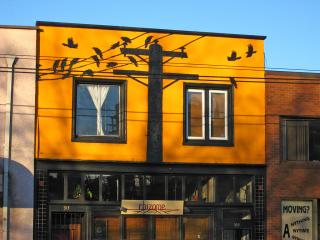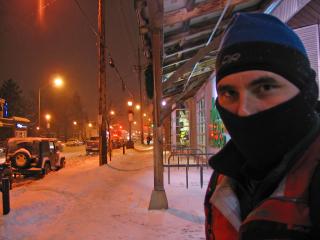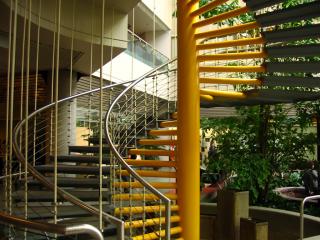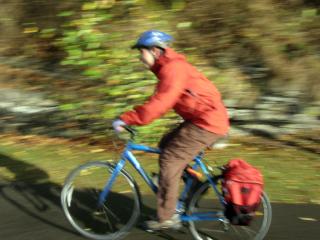Michael Pollan‘s superb book tells the stories of four meals and the processes through which they came to exist. At one extreme is a meal of McDonald’s cheeseburgers, eaten in a moving car; at the other, a cooked wild boar he hunted, accompanied by things grown or gathered. Pollan also considers two types of pastoral food systems: one on a mass scale intended to serve the consumer market for organic foods and a truly pastoral farm centred around grass feeding, healthy animal interactions, and sustainability. His descriptions of the four, and comparisons between them, provide lots of interesting new information, and fodder for political and ethical consideration.
Among these, the industrial food chain and the grass-fed pastoral are the most interesting. Each is a demonstration of human ingenuity, with the former representing the sheer efficiency that can be achieved through aggressive specialization and disregard for animal welfare and environmental effects and the latter demonstrating how people, animals, and plants can interact in a much more ethical and sustainable way, albeit only on a relatively small scale. The account of Polyface Farm – the small-scale pastoral operation run by Joel Salatin – is genuinely touching at times, as well as startling in contrast to the industrial cattle feeding and killing operations Pollan describes. While the book heaps praise on the operation, it also recognizes the limitations inherent: we cannot live in cities like New York and get our food from such establishments, nor can the big stores most people shop at manage to deal with thousands of such small suppliers. Unless you are willing to go back to a pre-urban phase for humanity, the industrial organic chain may be the best that is possible.
Pollan’s book is packed with fascinating information on everything from the chemistry of producing processed foods from corn to some unusual theories he learned from mushroom gatherers. Regardless of your present position on food, reading it will make you better informed and leave you with a lot to contemplate.
Arguably, the book is at its weakest when it comes to ethics. Pollan rightly heaps criticism on factory farms, but seems to pre-judge the overall rightness of eating meat. Some of his arguments against vegetarianism and veganism – such as that more animals are killed in fields growing vegetables than in slaughterhouses – are simply silly. No sensible system of ethics considers it equivalent to kill a grasshopper and to kill a pig. I also think that he places too much emphasis on the relevance of whether an animal anticipates death or not. I don’t see how the inability of animals to “see is coming” makes their deaths qualitatively different from those of human beings.
That said, his arguments are generally coherent and certainly bear consideration. He never explicitly spells out the wrongness of eating industrial meat, though it is clear that his implicit argument is based around the conditions under which the animals live, rather than the fact of killing them. This is a sensible position and he is right to contrast Polyface farm with industrial farms on the basis of how they allow or do not allow animals to express their “characteristic forms of life.” Rather than press his argument to a conclusion, he abandons his consideration in a bout of fantasy: talking about how much better the treatment and slaughter of animals would be if farms and slaughterhouses had glass walls.
I highly recommend this book to almost everyone. Modern life is very effective at concealing the nature and origin of what we are eating. This book helps to pull back the veil to some extent. It is also a reflection of the ever-increasing politicization of food. What you choose to eat is an important signal of your ethical and political views, to be judged accordingly by others. Whatever position you end up taking, it will be better informed and illustrated if you take the time to consider Pollan’s thoughts and experiences.
For my part, the book has convinced me that I should strictly limit or abandon the consumption of eggs. His description of egg operations is especially chilling and supports his assertion that: “What you see when you look is the cruelty – and the blindness to cruelty – required to produce eggs that can be sold for seventy-nine cents a dozen.” Other resolutions stemming from reading this book include to try eating more types of mushrooms, improve my cooking generally, and remember that under no circumstances should one accept an invitation to collect abalone in California.




